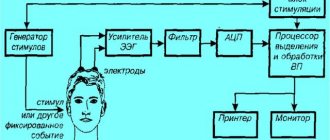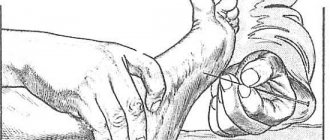How to get into a lucid dream quickly without preparation and on the first try, this is the question that novice researchers of the depths of the subconscious ask. Maybe you also experienced awareness in a dream, but did not understand that it was a lucid dream. First of all, this state differs from simple sleep in that you can act in it, and not watch a movie shown by the subconscious. In it you can ignore the laws of physics, communicate with dream characters, change space and move through time at your discretion. There are people who are given this opportunity from birth, others have to work using special techniques to achieve results.
Transformation of consciousness and the ability to control one's visions is something that people have dreamed about for centuries. The technique of lucid dreaming has been developed over the years, and today those who want to experiment with their subconscious have the opportunity to see meaningful illusions. Many people are interested in how to get into a lucid dream and do it quickly. We invite you to familiarize yourself with the most popular methods of recent years.
What is "Lucid Dreaming"?
Usually we have simple dreams in which events are completely independent of us, we cannot realize that we are dreaming, and we cannot control this process in any way. We are inactive, both in thoughts and in body. Everything is immobilized.
There is another option for sleep, this is rare, and usually causes fear and panic . This is called a lucid dream. In a lucid dream, we clearly understand what is happening around us on a subconscious level. We become a fully-fledged subject of our dream, we respond and are aware of everything that is happening around us, we act independently.
But from the outside, if you look carefully at a person who is in a lucid dream, you will not notice anything, no changes, no movements of the arms or legs, no, there is nothing like that. The body is completely immobilized, it is asleep.
You can be skeptical about this, call everything complete unrealistic nonsense, mysticism, a riddle, but in our lives there are so many unsolved secrets, so many unsolved things, you just have to try to open this alluring door, and new opportunities, new worlds will open up before you.
Causes of lethargic sleep
Lethargic sleep occurs for several reasons, most of which are mental in nature:
- Severe stress, hysterical states;
- Mental and nervous diseases - both relatively “harmless” (like chronic fatigue syndrome) and more serious ones, such as schizophrenia;
- Intoxication;
- Infection;
- Overdose of certain drugs.
There are cases when lethargic sleep occurred soon after suffering a sore throat. This was explained by the vital activity of special bacteria that infected the patients; these bacteria made their way into the midbrain and caused its inflammation, which is why lethargic sleep set in.
In some cases, the pathological condition occurred in response to stress from the loss of close relatives.
Yoga: Sivasana pose (without preparation)
Get ready for bed , take a relaxing shower, take your time. Lie down on the bed or sofa where you usually sleep. Try to make sure that there is silence around you, so that nothing distracts you: no sounds from the TV, phone, or player.
Relax , stretch your arms along your body so that they do not touch your hips, spread them slightly to the sides. Feel your body, down to the smallest cells. Start relaxing from your little toes, then slowly, slowly move up, gradually relaxing each muscle you encounter along the way.
Lower your stomach, breathe evenly . Relax your chest, shoulders, neck. We have reached the muscles of our face, slowly release them. Top of the head. Our whole body should be soft, the most important thing at this moment is not to move. Otherwise, your mood will be completely lost, your body will understand that you are moving, and you are not ready for complete relaxation.
Yes, it is at such moments that your heel, nose, hand or eye will definitely itch. But don’t give in, these are all tricks of your body, it is also not stupid and clearly understands that before putting you to sleep, it needs to check the activity of the brain to see if it will react.
This is how our body takes care of us, of course, if you are sleeping, then it doesn’t matter to you whether your knee or foot itches, you are just sleeping. Also a very important point - do not swallow saliva too much, try not to pay special attention to it, because if you do this and are clearly aware, then you have not relaxed.
Your body will test you again. Just switch off and do everything automatically. The next step is breathing, you can’t forget about it either. Calm the rhythm of your heart, breathe evenly, inhale deeply and exhale slowly. Still, you have once heard how people breathe in their sleep, slowly, your breathing should be similar. We are ready to enter the dream, and you?
Gradually your body becomes weak, you stop feeling it, now your thoughts and body act separately. Your body has fallen asleep. Now your world is in front of you, take your brushes and boldly paint your life, create, create. At the same time, you will understand everything and be aware of your reality. Your thoughts will be active.
How to learn to end an unpleasant dream in your sleep
A difficult skill that needs to be learned in the process of studying lucid dreams is to change your emotions during sleep, which will entail changes in all surrounding events. If you have a good sense of humor in your life, it will be easier for you to deal with this. It is by changing your negative emotions such as fear, anger to laughter and joy that you most quickly change the plot of your dreams.
What needs to be done? While in a dream, stop the events and imagine how something that frightens you becomes very funny. In dreams, imagination plays a very serious role, so it is worth developing it in real life.
How to get out of a lucid dream
Some people can be quite frightened by such a state , when they cannot move anything, even if they really want to. But you also need to get out of this state on your own.
Focus your attention on something, the top of your head, for example. The body will gradually return, you will begin to feel your fingertips, arms, breathing will normalize, you will wake up.
There is nothing wrong with this, this state only captures you completely, allows you to be alone with your thoughts and with your reality, and for this you don’t need to know any “shamanic” rituals, you don’t need to read prayers, you just need your body and consciousness.
MEDICATIONS AND SLEEP
Sleep disturbances are caused by most psychoactive drugs, i.e. influencing mental activity, means. These include central nervous system stimulants (for example, amphetamine), antidepressants, sedatives (for example, sleeping pills and tranquilizers). The stimulant effect of nicotine can also disrupt sleep. Alcohol can also cause awakenings at night.
The abuse of sleeping pills has a particularly adverse effect on sleep. Most sleeping pills retain their therapeutic effect if the period of their use does not exceed two weeks, but they are often taken for months or even years. With constant use, addiction to these drugs develops, which is why you have to gradually increase the dose to a value that disrupts the sleep structure, which further disrupts sleep in general. Patients attempting to stop taking benzodiazepine medications may experience increased insomnia (rebound phenomenon). If you try to stop taking sleeping pills after using them for several days, you may experience increased periods of REM sleep and nightmares.
Is it possible to enter a dream using any equipment?
People who have been interested in this kind of thing for a long time have already invented a number of devices for this that you can use.
- “Glasses” – yes, those exist too. These are glasses with light bulbs, that is, they begin to blink when a person is already in the sleep phase, he sees the light with his eyes, which means he realizes that in reality, because a sleeping person cannot always notice the light that shines in his face. And here, when the glasses blink at a certain moment, the person clearly understands that this is a lucid dream, he can create his own world.
- Instead of glasses, they also use a mask , which is worn during long flights on airplanes or in daylight.
- Earplugs are also a great helper in this matter; they drown out extraneous noise well.
How to learn to order dreams
How can we learn to see the dreams we want to see? Sometimes we want to see loved ones in our dreams who are not nearby or we want to go to some place where we have never been. In this case, it is worth practicing a practice that helps to “order” dreams. You need to start small: before going to bed, try to think hard about the loved ones you want to see in your dreams. Why exactly relatives? Because you already have them in your subconscious and it will be easier to see them. When you become successful at this, make the task more difficult - think about some place where you want to go. The moment this starts to work out, program yourself to perform certain actions.
More on the topic: How to distinguish a dream from reality
Mindful sleep technique with knees
Another very interesting way to get into a “waking dream” is to use different body positions and poses. Our body parts can help us with this. The knees also play an important role in our body. When we bend them, we get the pose of a newborn baby.
Many meditations , and for good reason. The knees also help to transition into a lucid dream; there is a special technique.
One hundred percent way to get into “ Dream in reality”:
Lie on your back, bend your knees to your body, position them so that you do not sway in different directions, so that the position of your body is clearly fixed. If we again begin to lose balance, then we will not be able to go into sleep.
Okay, knees up. Press them as tightly as possible to your body. Having fixed the position, we also begin to gradually relax from our toes, rise higher and higher, release all tensions, clear our thoughts, and gradually fall into sleep. Balance your breathing.
This position is most likely because there is maximum concentration . The most difficult thing is to maintain balance, especially at the stage of sleep, when your body simply cannot be felt at all, so similar practices are used by more trained people.
Preparation for practice for beginners
Before entering a lucid dream, you need to prepare for the practice. There is a special technique that allows you to avoid mistakes and achieve results faster. Success depends on your desire and attitude, so banish all negative thoughts and train constantly. Remember, everything is not given at once; it may take a long time before you learn how to become aware of yourself in a dream. It’s different for everyone, some may learn after a week or a month, while for others it won’t take even a year.
A mandatory attribute of practice is a diary, which must be started at the very beginning of training. After you open your eyes in the morning, the first thing you do is write down everything that you managed to remember from the dream. Even little things will need to be written down in it, giving them no small importance. It's better to put such a diary under your pillow or near your bed so that you can immediately start writing in the morning, while the information is still fresh in your memory.
However, if a person has not decided to have a notebook for recording sleep, you can try without it. The most important condition is to remember the details of what is happening.
It is believed that those who are interested in computer games unwittingly begin to become aware of their dreams over time. Maybe for you this will be one of the steps towards understanding dreams. Scientists have proven that if a person plays games at least once or twice a week, over time he will begin to become aware of his dreams. The practice of lucid dreams also includes meditation, thanks to which you can tune in to a positive result. Don't forget to include a complex of vitamins in your diet to help your brain function better.
Lucid dreaming during the daytime
You can also enter into a lucid dream during the day, and for some this is the most successful option. During the day we rarely sleep very soundly, our sleep is light, and besides, during the day there are many sounds that distract you , especially when everyone in the household is awake.
In such a situation, it’s quite difficult to get into the right frame of mind, and also relax, knowing that you still have a lot of unfulfilled tasks ahead, you’ll agree. But some people, and I know quite a few of them, can clearly remember dreams during the day, down to complete phrases and sentences.
It is unlikely that we will be able to stay in a lucid dream all night, when then our head will rest? Therefore, much at night is simply erased from our memory, and during the day, when you lie down for literally 20 minutes, you can just use the practice of entering a “waking dream.”
Which technique is the fastest?
There is no instant way to learn how to control the subconscious. All techniques require some effort and time. Any of them will bring quick results if you are serious and follow the prescribed rules. For some it takes 2 days to successfully complete the experiment, for others it takes several weeks.
Techniques for controlling dreams have been developed by scientists, as well as lovers of esotericism. It was not possible to fully explain the nature of the origin of meaningful dreams. Scientists are sure that the matter is in the work of certain parts of the brain; esotericists are inclined to believe that the basis of such dreams is the exit of the human soul from the bodily shell to the astral plane.
How to enter a dream?
Oddly enough, the first thing that’s right is to get a good night’s sleep. After all, it is a person who has had enough sleep that is able to absorb and remember more information; he will be able to concentrate much better than a person who has not had enough sleep.
He will simply lie down on the pillow, close his eyes and fall asleep like a baby; here no lucid dream will be needed. Just to get to the cherished bed. Therefore, I recommend that you get a good night's sleep .
It is also advisable to use various objects: a maxi for sleeping - it helps you not to see daylight, this will once again distract you and help you concentrate. And the body may simply think that night has already come and we need to rest.
Earplugs – have you ever heard of these? They are also often used on airplanes and other places with increased sound activity. They will help you drown out extraneous sounds from neighbors or the barking of a dog under the window.
Remember! Nothing should distract you, otherwise the whole process will fail.
Recommendations for mastering technology
Let us note that learning is a long process that requires certain efforts and it is imperative that a person must have a constant number of hours allocated to rest. Make sure that your body works well according to your biological clock, which means you have full, healthy sleep.
Check out the literature that can greatly help you in learning the technique:
- Laberge Stephen. "Lucid Dreaming Practice"
- Laberge Stephen, Howard Reingold. "Exploring the World of Lucid Dreaming"
- Mikhail Raduga. "Phase. A Practical Primer on Out-of-Body Experiences"
- Carlos Castaneda. "Journey to Ixtlan" - "Active Side of Infinity"
- Florinda Donner. "Life-In-Dream"
- Robert Monroe. "Travel Out of the Body"
- Bradley Thompson. "Lucid Dreaming in 7 Days"
- Tenzin Wangyal Rinpoche. "Tibetan Sleep and Dream Yoga"
Methodology
Many techniques are based on the questions “Am I dreaming?” It is by asking ourselves the same question several times and answering it internally that we confirm that we mentally still hear ourselves and are in reality.
We relax again, lie down on our back, because it is on the back that the body can concentrate as much as possible. It is unlikely that you will ever be able to repeat this while lying on your side or on your stomach (unless you use your knees).
We gradually relax and begin to ask ourselves the question: “Am I sleeping or not?” and give yourself a clear answer mentally. When you fall asleep and do not feel your body, ask yourself again if the answer follows, but your “dream” was a success. This technique, of course, can be used both day and night.
Zealand method
If you have already sufficiently mastered all the necessary skills, you can begin special exercises that will induce lucid dreams. How quickly this will happen is unknown.
What will lead to success:
- Your strong desire, turned into an intention, to induce a lucid dream.
- The practice of “reality testing”. Several times during the day, think: “Am I dreaming right now?” This is exactly what Zeland’s method is, set out in the book about reality transurfing.
To check that you exist in reality at the moment, you can pinch yourself, touch yourself, or scream out loud. And don’t forget to write down all your dreams in the morning.
Watch a video on how to induce a lucid dream:
Finally, a few tips
- If you don’t see the point in a lucid dream, and don’t believe in it at all, then don’t do it, you simply won’t succeed, because your brain is pre-programmed to get a different result, but I’m sure everyone wants to try.
- If you still decide to go into such a dream, then be sure to remember everything as much as possible , every detail and every little thing is important, it is precisely such dreams that most often come true later, giving rise to the so-called deja vu effect. After you wake up, take a blank sheet of paper and write down everything you remember. It’s better to keep a notepad right under your pillow to shorten the time after waking up. Clearly remember exactly your inner feeling, if we cannot always understand the dialogues in a dream, then you can clearly distinguish the feeling of fear from the feeling of joy, or pity from the feeling of love and fulfillment. Therefore, it will be easier to remember feelings.
- If you fall asleep too deeply, and then it’s hard for you to get out of this “waking dream ,” then it’s better to use an alarm clock, set it for a certain time, based on how long you plan to sleep in this state.
- You can also determine by some external signs that you are in a dream . Look at your hands in a dream, they will blur, look in the mirror, your image will change, or if you have text at hand, then you simply will not be able to read it. Also, the time on the watch will constantly change every time you look at the dial.
- If you are in a lucid dream, then do not try to move, do not try to change the position of your body, your body will not hear you anyway, it is asleep, it is completely paralyzed, and it will simply be useless to reach it somehow. This, on the contrary, will bring you unnecessary stressful situations, you will start to panic because you do not feel yourself. In a lucid dream, you live only with thoughts. And you can awaken yourself only with thoughts.
Lucid dreaming is a very rare thing, but you can learn how to enter it. Such a dream is the initial stage of your soul entering the so-called astral plane. And this is not a scary word at all.
People use lucid dreaming as a daily practice, for meditation, for calming and relaxing the body, for clearing thoughts, and for spiritual healing.
In this way, a person easily establishes a connection with his subconscious self. Take a risk, try it, let it be a new stage in your development and self-development.
Treatment of lethargic sleep
In order to distinguish lethargy from death, it is necessary to conduct an electrocardiography or electroencephalogram. The person's torso should also be carefully examined for injuries clearly incompatible with life or obvious signs of death.
The therapeutic strategy must be purely individual. The violation in question does not imply hospitalization of the patient. It is enough if the individual is under the supervision of relatives. A person in a state of lethargy, first of all, should be provided with adequate living conditions in order to minimize the occurrence of side effects after awakening. Care involves placing a person in a ventilated and thoroughly cleaned separate room, parenteral feeding (or through a tube), hygiene procedures (the patient must be washed, anti-bedsore measures must be taken). It is also necessary to monitor the temperature. If it is cold indoors, a person should be covered. In hot weather, try to avoid overheating.
Related posts:
- The difference between depression and stress In our modern world, a lot of energy is spent on stress...
- Psychology and psychiatry, what is the difference? A modern person’s entire life is accompanied by a mass of disturbing phenomena, accompanied by stress...
- Hyperkinesis with developmental delay Translated from Greek, “hyperkinesis” means “supermovement”, which accurately reflects...
- Arithmetic Skills Disorder This disorder consists of a specific deficiency in numeracy skills that does not...
Signs
Every person needs to know the signs of this condition, since it is quite difficult to distinguish a sleeping person from a deceased person. The main signs of this condition include:
- imperceptible and very weak breathing;
- low body temperature;
- barely perceptible heartbeat (usually 3 beats per minute).
After a person wakes up, he will quickly catch up with his age and will also age instantly.
In fact, you can distinguish such a state from a deceased person if you carefully examine the sleeping person. As a rule, in this case it is necessary to call an ambulance, which will examine the patient and then correctly recognize the condition.
Only an experienced person can independently determine lethargic sleep, since he must take into account several signs of such a condition. Unfortunately, many perceive it as death.
Coma and lethargy, what's the difference?
Although the two diseases are very similar, they are different. Coma is provoked by physical disorders - trauma, severe damage. In this case, the nervous system does not work properly; the person’s physical condition is maintained with the help of special devices. In a coma, a person also cannot respond to various stimuli around him.
If you can get out of lethargy on your own, after some time, you can get out of coma only after a long course of therapy.
Treatment methods for chronic insomnia and their effect on associated pain syndromes
According to clinical guidelines, the method of choice for the treatment of chronic insomnia is cognitive behavioral therapy for insomnia (CBT-I). It includes two approaches.
Cognitive therapy is based on the assumption that a person's problems stem from a distortion of reality based on misconceptions. Therapy in this case consists of looking for distortions in thinking and teaching an alternative, more realistic perception of one’s experience. Behavioral therapy is aimed at destroying pathological conditioned reflex connections and developing desirable forms of behavior.
The main idea of using psychological techniques is to eliminate the factors that support insomnia. These include: maladaptive behavior and thoughts, ideas about the impossibility of normal sleep, excessive attention to the fact of sleep disturbance, the habit of “forcing yourself to sleep,” lack of association between bed and sleep, lack of a regular daily routine. First, the patient is given recommendations on sleep hygiene, then the role of sleep in life and sleep mechanisms are discussed with him. This is necessary so that he realizes that sleep problems do not pose a “deadly” threat to him.
The patient is advised to introduce a repeating but short ritual before bed, when the same actions are performed in the same sequence. Next, he discusses the use of stimulation control techniques, which minimize the influence of stimulating factors at night. These methods are complemented by recommendations for relaxation therapy in the form of progressive muscle relaxation, autogenic training or meditation. The cognitive part of CBT-I includes behavioral experiments - based on the knowledge gained, several elements of the sleep regime are changed and after 1 week. The effectiveness of this impact is assessed [28].
In a study by J. Edinger et al. it has been shown that the improvement in sleep achieved with CBT-I in patients with fibromyalgia is also accompanied by a decrease in pain [29]. However, another study of the effect of CBT-I on pain in a group of patients with osteoarthritis did not find such a clear effect: despite the improvement in sleep indicators during therapy, positive dynamics were noted only according to the SF-36 scale, but not the McGill questionnaire [30].
The presence of common factors in the chronicization of insomnia and pain syndrome (the emergence of dysfunctional beliefs that change behavior, catastrophizing of one’s defect, the role of relaxation) made it possible to propose a non-pharmacological technique that combines elements of both CBT-I and CBT for pain. The application of this approach in the study of N. Tang et al. in patients with insomnia associated with non-cancer pain, it improved both sleep indicators (reduced time to fall asleep, sleep efficiency) and concomitant anxiety, depression and pain. The improvement was maintained for 6 months. The clinical effect was significant for sleep and moderate for pain. The authors conclude that combination therapy is superior to CBT alone for pain or insomnia [31].
Despite the high effectiveness and safety of CBT-I, there is the problem of significant investment of time and effort on treatment by both the patient and the doctor, since the full course of therapy includes 6 to 8 weekly sessions with a specialist trained as a clinical psychologist or psychotherapist.
The lack of specialists with appropriate education and experience, as well as the distrust of Russian patients in psychotherapy in general, determine low awareness of this method of treatment and its unpopularity. Therefore, pharmacotherapy remains a rather popular area of treatment for chronic insomnia.
In a study by H. McClusky et al. It has been suggested that the combined use of CBT-I and pharmacotherapy can achieve a better effect due to the immediate effect of hypnotics and the delayed effect of CBT-I, which can increase patient adherence to treatment [32]. C. Morin et al. (2009), who studied the effectiveness of the combined use of CBT-I and the hypnotic drug zolpidem, recorded a more significant decrease in the severity of insomnia immediately after the end of therapy. Long-term outcome was better in the group of patients who stopped taking sleeping pills but continued to use the skills learned during CBT-I [33].
The range of medications used to treat sleep disorders is quite wide - these include GABAergic hypnotics, histamine receptor blockers, melatonin preparations, antidepressants with sedative effects, neuroleptics and antiepileptics.
The effects of benzodiazepine and non-benzodiazepine GABAergic hypnotic drugs have been most studied in clinical studies.
Benzodiazepine derivatives act on all types of subunits of the GABAA receptor complex, increasing its affinity for GABA. The connection of GABA with the receptor increases the flow of chlorine ions into the nerve cell, which leads to hyperpolarization of its membrane, and therefore the generation of an action potential becomes difficult (the cell is “inhibited”). Non-selective binding to various protein subunits that make up the GABAA receptor leads to the development, along with sedative/hypnotics, of other effects - antiepileptic, amnestic, anxiolytic. The results of randomized clinical trials of the use of nitrazepam, lorazepam, clonazepam and diazepam for insomnia have been published (only drugs available in Russia are mentioned here) [34].
Another group of drugs that bind to the GABAA receptor complex has a more selective effect. Their affinity is high only for the α1-protein subunit of this receptor, which determines the predominantly hypnotic effect. Based on the first letter of their generic name, they are called Z-drugs (zopiclone, zolpildem, zaleplon). Due to their short half-lives, Z-drugs have an advantage over benzodiazepines in terms of the likelihood of developing addiction, dependence, and rebound insomnia [34].
The first to enter the pharmaceutical market in 1986 was zopiclone, a drug with a maximum half-life (about 5 hours), the next was zolpidem (half-life - 2.5 hours), and the last was zaleplon (half-life - 1 hour) in 1999. . The different half-lives determine the main directions of clinical use of these drugs for insomnia. The long half-life of zopiclone requires its use for difficulty falling asleep after going to bed in the evening. Zolpidem can be used for both difficulty falling asleep in the evening and waking up at night, but even a relatively short half-life can lead to episodes of automatic behavior if awakening occurs at the wrong time [35]. Zaleplon was created within the framework of the concept of the “ideal sleeping pill”, as a drug that “triggers” natural sleep without further affecting its structure, due to its very short half-life. The drug is quickly absorbed and penetrates the blood-brain barrier, which ensures a rapid (within 10 minutes) onset of effect. It is assumed that the short half-life also provides a lower risk of developing the phenomena of addiction and dependence compared to other Z-drugs. When zaleplon is used during night awakenings, it does not cause aftereffects in the morning, expressed in deterioration in reaction speed and memory, as can be the case with the use of other hypnotics, for example, zopiclone [36]. The zaleplon drug available in Russia is Sonata® Adamed (Adamed Pharma, Poland). It is available in the form of capsules containing 10 mg of active substance, which determines both the minimum and maximum daily dose (10 mg/day). Sonata® Adamed may also be of interest to doctors because, unlike other Z-group drugs, it is dispensed according to a regular (form No. 107-1/u) prescription.
Physiology of sleep and wakefulness, the meaning of sleep for humans
A person cannot stay awake for a long time. All organs and systems get tired and need rest. This rest is sleep.
During rest, conditioned and unconditioned reflexes are inhibited. During deep sleep, breathing decreases. Metabolic intensity decreases by 8-10%.
Paradoxical sleep excludes all secondary information, so information is processed and remembered.
To restore the functioning of the central nervous system, a periodic decrease in brain temperature is necessary, which occurs during the slow-wave phase of sleep.
At this time, the entire hormonal sphere is rebuilt and metabolism is restored. During the deep sleep phase, cell energy is restored. Sleep increases the brain's resistance to stress and preserves a person's psycho-emotional state.
If you deprive a person of sleep, this will lead to a serious mental disorder. He will be irritable, inhibited, and hallucinations may appear. And if you stay awake for too long, paranoid obsessions are possible.
A person needs sleep more than food. In a state of sleep, not only the brain receives rest, but also all the internal organs that ensure human life.
How is lethargy treated?
The treatment for lethargy remains a mystery to this day. Back in 1930, this method was used to wake up: first, a sleeping pill was injected into a person intravenously, and then an stimulant drug was administered in the same way.
This helped the person to go into himself for 10 minutes, which allowed doctors to assess the general health of the patient. Hypnosis is also quite effective as a treatment. After awakening, many patients claim that they learned a new language or remembered other important information.
This is due to the fact that the brain completely relaxed during a long rest and began to absorb information from the outside.
Patients do not need to take medications or undergo inpatient treatment if their health condition is satisfactory. Otherwise, restoration of health is carried out under the supervision of doctors.
Anyone can go into lethargy, so it is important to know how to distinguish this state from death and coma, as well as why lethargic sleep may occur. All this will allow you to take the right measures to monitor a sleeping person, as well as provide first aid if his health deteriorates.
Modern theory of chronic pain
According to the International Pain Association, pain is “an unpleasant sensation and emotional experience associated with actual or potential tissue damage or described in terms of such damage.” In a more modern interpretation, pain refers to an upsetting experience associated with actual or potential tissue damage and accompanied by sensory, emotional, cognitive and social components.
Pain is considered chronic if it lasts more than 3 months, which exceeds the period of normal tissue healing after injury. About 20% of people around the world suffer from chronic pain, and about 15% of all medical visits occur with complaints of pain of various types [8].
The sensation of pain is the result of activation of the nociceptive system (nociceptive tissue receptors, nociceptive afferents in case of damage to peripheral nerves or damage/dysfunction of central nociceptive structures). Nociceptors are activated by both mechanical or thermal stimuli and chemical substances. The resulting excitation spreads along sensitive nerve fibers to the body of the spinal ganglion neuron, then along the dorsal root it reaches the dorsal horn of the spinal cord, from where ascending tracts (spinothalamic, spinoreticular and spinomesencephalic) are formed to the subcortical parts of the brain and the nuclei of the thalamus. From the thalamic nuclei, pain signals enter the postcentral gyrus of the parietal cortex. The somatosensory cortex of the cerebral hemispheres determines the location, intensity and nature of pain. Association areas of the cerebral cortex (insula cortex, anterior cingulate cortex, prefrontal cortex and posterior parietal cortex) provide the emergence of mental components of pain and associated behavior. In addition, the interested areas of the cortex have bilateral connections with the thalamic nuclei, structures of the limbic system (amygdala, hippocampus, fornix, septum, entorhinal cortex), reticular formation of the brain stem, and hypothalamus [9].
In addition to constant pain, patients with nociceptive pain also develop zones of increased pain sensitivity (zones of hyperalgesia). Primary hyperalgesia develops in the area of damage, secondary hyperalgesia is localized outside it, spreading to healthy tissue. The development of primary hyperalgesia is based on the phenomenon of peripheral sensitization (increased sensitivity of nociceptors to the action of damaging stimuli). Secondary hyperalgesia occurs as a result of central sensitization (increased excitability of nociceptive neurons in the dorsal horns of the spinal cord). Sensitization of nociceptors occurs due to the action of algogens coming from the blood plasma and released from damaged tissue, as well as from the peripheral terminals of C-nociceptors. The reasons for the sensitization of central nociceptive neurons are the direct effect of glutamate and neurokinins, as well as the activity of immune and glial cells and the cytokines, chemokines and growth factors they secrete on the membranes of nociceptive neurons of the dorsal horn, the thalamic nucleus and the somatosensory cortex of the cerebral hemispheres [9].
The antinociceptive system plays an important role in the formation of pain. Inhibition of pain impulses occurs as a result of descending influence from the cerebral cortex and some nuclei of the brainstem. This regulation is carried out through serotonergic, opiodergic, noradrenergic and a number of other systems. Experiments have shown that electrical stimulation of the structures of the antinociceptive system, especially the raphe nuclei, central gray matter of the brain stem, and tegmental nuclei of the midbrain, causes pain relief in humans and animals.
Neuropathic pain occurs due to direct damage to both the peripheral nervous system and the central structures of the somatosensory analyzer. In this case, there is a disruption of the mechanisms of generation and conduction of the nociceptive signal in nerve fibers and the processes of controlling the excitability of nociceptive neurons in the structures of the spinal cord and brain. Against this background, the number of sodium channels on the nerve fiber membrane increases, new atypical receptors and zones for generating abnormal ectopic impulses appear, mechanosensitivity arises, and conditions are created for cross-excitation of dorsal ganglion neurons. An inadequate reaction of the nerve fiber to irritation is formed, which contributes to a change in the pattern of the transmitted signal. Such impulses from peripheral structures cause sensitization of nociceptive neurons and death of inhibitory interneurons. Against this background, neuroplastic processes are initiated, leading to the emergence of new contacts of tactile and nociceptive afferents, and the efficiency of synaptic transmission increases [9, 10].
Psychogenic (dysfunctional) pain is often not associated with damage to tissues or elements of the somatosensory nervous system. They are characterized by the presence of concomitant mental disorders. The localization of pain usually does not correspond to the anatomical features of the tissues or zones of innervation. Activation of the nociceptive system during psychogenic pain develops simultaneously at different levels. In this case, indirect excitation of nociceptors occurs due to retrograde activation by sympathetic efferents and/or through reflex muscle tension. Prolonged muscle tension is accompanied by increased synthesis of algogens and sensitization of nociceptor terminals.
With a long-term pain syndrome, all three of the above pathophysiological mechanisms can take part in the formation of the sensation of pain. A special role in chronic pain is played by the characteristics of the patient’s mental life: previous pain experience, personality traits, psychopathological syndromes, rental attitudes. Stress, anxiety, depression, passive strategies for coping with pain, catastrophizing, and sleep quality significantly affect the sensation of pain [9, 11].
What is a sleep disorder
Sleep disturbance
- a fairly widespread phenomenon, it can be primary - not related to the pathology of any organs or secondary - arising as a consequence of other diseases. Insomnia is the most common problem faced by those suffering from sleep disorders.
Sleep is a regularly recurring, easily reversible state of the body, characterized by rest, immobility and a pronounced decrease in reactions to external stimuli. During this period, the body's systems are restored, information received during the day is processed and stored, and the immune system's resistance to infectious agents increases.
Sleep disorders are a common problem in the modern world, full of stressful situations, round-the-clock work, a large number of temptations and excesses, combined with a sedentary lifestyle and poor environment. Between 8 and 15% of the world's adult population report frequent or persistent complaints of poor or insufficient sleep.
9-11% of adults use sedative-hypnotics, and among older people this percentage is much higher. Sleep disorders can develop at any age. Some of them are more common in certain age groups, such as bedwetting, night terrors and somnambulism in children and adolescents, and insomnia or pathological sleepiness in middle-aged and older people.
Content:
Types Causes Home Treatments Treatments
Consequences of sleep disturbance
Sleep is often an indicator of a person's overall health. Healthy people generally sleep well, but recurring sleep problems can be an indicator of various medical conditions.
Sleep is of great importance for a person's physical and psychological health. Ignoring sleep disorders can lead to poor overall health, increased stress, and many other problems. The main consequences of sleep disturbance:
- Impaired glucose tolerance.
- Link to obesity.
- Increased cravings for carbohydrates.
- Weakened immune system.
- Increased risk of breast cancer.
- Decreased attention and ability to concentrate.
- Atherosclerosis.
- Depression and irritability.










